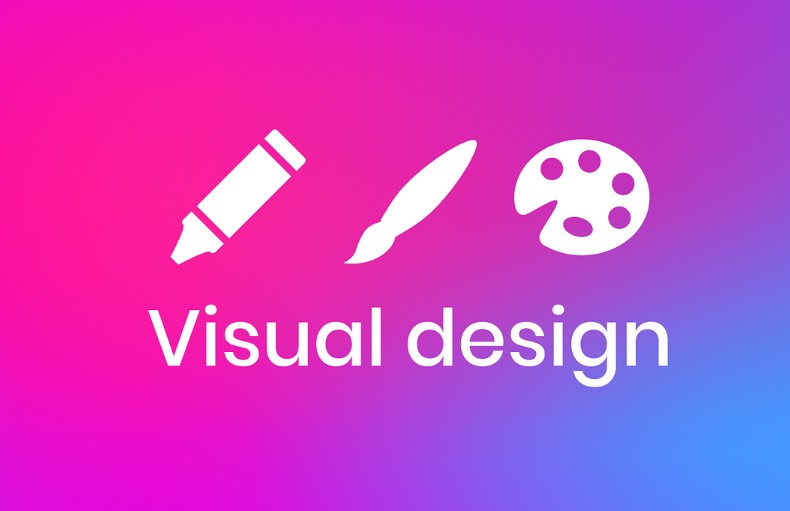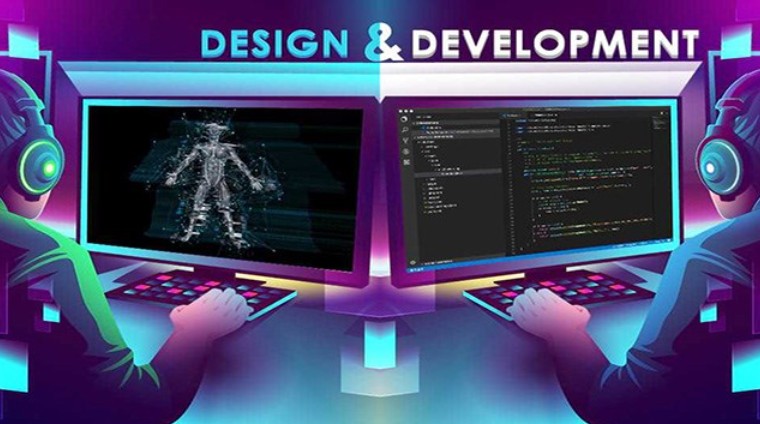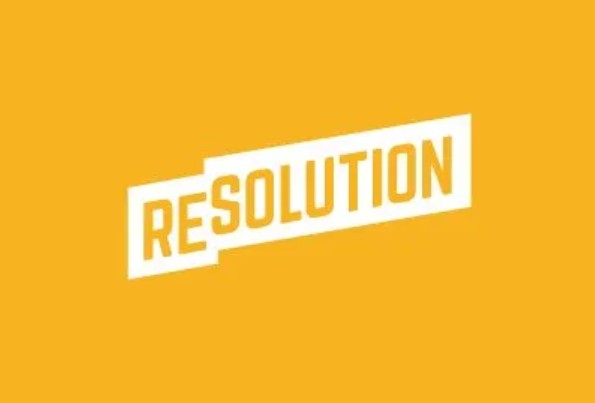Best Selling Products
What is Visual Design? Discover the Role of 'Visual Wizards'
Nội dung
- 1. What is Visual Design?
- 2. Roles and responsibilities of Visual Designer
- 2.1 Building and maintaining a brand identity system
- 2.2 Interface design and graphic components
- 2.3 Create visual prototypes to support UX Designers and Developers
- 2.4 Coordination with other departments
- 2.5 Research aesthetic trends
- 3. Skills required of a Visual Designer
- 4. Popular tools
Visual Design is not just a “painting job” for beauty, but the art of conveying messages, emotions and brand values in a professional and effective way. A successful Visual Designer not only needs sharp aesthetic thinking, but also communication skills, a scientific working process and the ability to constantly update trends.

Today, visual images and experiences play a key role in connecting brands with customers. You can see Visual Design or “visual design” appearing everywhere: an online shopping website, a mobile application, to a company’s brand identity. But do you clearly understand what Visual Design is and what skills and processes a Visual Designer needs to turn ideas into attractive images? This article will be a journey to explore Visual Design in depth and what you need to know about a Visual Designer. If you are someone who is considering pursuing a design career, or is managing a creative team, let’s explore with SaDesign to understand more through the article below!
1. What is Visual Design?
First, let’s define Visual Design. Visual Design is basically the process of using graphic elements: color, typography, images, icons, layout to convey messages, emotions and brand values to viewers. While UX Design (User Experience) focuses on user experience and UI Design (User Interface) focuses on interaction, Visual Design emphasizes aesthetics and visual consistency.
Color: Each color carries its own message – red represents dynamism or warning, blue represents trust and tranquility. Professional color coordination helps brands stay in the minds of customers longer.
.png)
Typography: Choosing the right font increases recognition and ensures good readability. Typographic hierarchy (title, subtitle, content) helps guide the eye naturally.
Images & Iconography: Illustrations and icons help explain ideas faster and more vividly than pure text.
Layout & Spacing: Reasonable layout and white space help viewers focus on important information, creating a comfortable feeling when reading.
Visual Design is not limited to just one platform; it is applied in website design, apps, advertising banners, printed publications, even booth decoration, product packaging... Therefore, Visual Designer expertise is always sought after in all business fields.
2. Roles and responsibilities of Visual Designer
Visual Designers are both the people who “draw” the appearance of a product and the bridge between the brand message and the user experience. In each project, they take on many important roles, from building the identity to creating detailed graphic components, while coordinating with the UX, Marketing, and product development teams. Below is a detailed analysis of each of the main responsibilities of a professional Visual Designer.
.png)
2.1 Building and maintaining a brand identity system
A brand identity system is not simply a logo or a color palette, but a visual “genome” that helps customers immediately recognize and remember the brand. A Visual Designer is responsible for:
Sketch and standardize the logo: Create the official version, monochrome version, icon version, and variations (horizontal, vertical) and specify “safe” space (clear space) around the logo to avoid being obscured.
Create a brand color palette: Choose primary, secondary, and accent colors, with clear HEX/RGB/CMYK codes. This ensures that all your materials – from presentation slides to banner ads to product packaging – are consistent in color.
Typography rules: Choose primary and secondary fonts, define heading levels (H1, H2…), paragraphs and captions. Detailed instructions on how to use bold, italic, line height, letter spacing to create a clear hierarchy.
.png)
Define image style: Determine guidelines for image style (realistic photography, vector, hand-illustrated, flat design, 3D…), color and filter treatment, as well as the context in which the image will be used to ensure consistency.
Draft brand guidelines: All of the above elements should be compiled into an easy-to-reference brand book that helps anyone – from new designers, to printing partners, to marketing agencies – understand and accurately apply the brand style.
When brand guidelines are strictly followed, the brand not only creates a consistent impression but also builds trust with customers: from the first impression to every interaction, it is a seamless, professional journey.
2.2 Interface design and graphic components
Once the identity is established, the Visual Designer moves on to the stage of detailing the digital product interface:
Build comprehensive mockups: From the homepage, category pages, to product detail pages or functional screens – all need to be designed to reflect the brand's tone & feel.
.png)
UI component design: Including buttons, input forms, dropdowns, sliders, navigation tabs... Each component not only needs to be beautiful but also has clear functionality, suitable for user behavior.
Create an iconography system: If the brand uses specific icons, Visual Designer will build a separate or customized icon set from the library, ensuring sharpness (vector) and consistent style (stroke width, rounded corners, details).
Banner, poster, artwork design: Support marketing with online/offline advertising publications such as web banners, event posters, social media cover photos. Each work needs to be attractive, convey the main message and have a clear call to action (CTA).
Through mockups and component design, Visual Designer ensures that the product interface is not only “beautiful” but also “easy to use”, contributing to increasing conversion rates and user retention.
2.3 Create visual prototypes to support UX Designers and Developers
A static mockup is sometimes not enough to fully convey the experience. That's why we need a prototype:
.png)
Interactive prototype: Use Figma, Adobe XD or InVision to add basic interactions: hover, click, page transition, simple animation.
User Flow: Outline the journey from opening the app/website to completing a goal (purchase, registration, form submission). Prototypes help illustrate each step clearly, avoiding misunderstandings between teams.
Quick usability test: Invite internal teams, stakeholders, or even real users to test the prototype to find problems with layout, interaction, or illogical information.
Developer documentation: Export CSS snippets, declare grids, spacing, colors, and fonts directly from Figma/Sketch; with instructions on how to implement animations or transitions. This reduces the time developers have to explain, reducing handoff errors.
2.4 Coordination with other departments
Design is not a solo game. A good Visual Designer needs to:
Listen to briefs from Marketing and Content: Understand customer insights, key messages, and from there propose appropriate images, slogans, and tone of voice.
.png)
Talk to UX and Product Managers: Balance business goals, user experience, and aesthetics. For example, if marketing wants to display multiple promotional banners, designers must ensure the banners have the right visual weight without cluttering the UI.
Sprint meeting with dev team : Grasp progress, release timeframe, and adjust graphic components to suit technical requirements (file format, size, loading performance).
Flexible communication: Use easy-to-understand language, illustrate with specific examples, negotiate task priorities, or persuade data-driven design proposals (A/B testing, heatmaps).
2.5 Research aesthetic trends
Design is an ever-changing field, and Visual Designers must be the first to “catch the wave”:
Follow design-related sites: Dribbble, Behance, Awwwards, Muzli… for daily inspiration.
Experiment with new styles: “soft” neumorphism, “transparent” glassmorphism, “minimal” dark mode… but always consider brand relevance and user experience.
.png)
Learn assistive technology: For example, AI-assisted design (Adobe Firefly, Midjourney) can create moodboards quickly, but the designer still plays a role in moderating and adjusting accordingly.
Participate in workshops and webinars: Events like UX Camp, DesignUp, Adobe MAX… not only present trends, but also help with networking and expanding horizons.
3. Skills required of a Visual Designer
A successful Visual Designer needs to have a harmonious blend of creative and technical thinking. Here are the core skills:
Professional color perception & color matching:
Understand the color wheel, contrast theory and harmonious color schemes.
Know how to use support tools like Adobe Color or Coolors to find the right color palette.
Flexible Typography:
Choose a font that fits the context – serif for traditional, sans-serif for modern.
Apply hierarchy, line height, letter spacing correctly to optimize readability.
.png)
Layout & spacing:
Master the principles of grid design to create balance.
Use white space to let the design “breathe” and avoid clutter.
Basic sketching & wireframing:
The ability to quickly sketch (paper sketch) helps convey initial ideas and save editing time.
Use tools like Balsamiq, Figma to create basic wireframes.
Communication & presentation skills:
Clearly explain design decisions to the client or team.
Persuade with logic, data, or real-life examples.
Aesthetic thinking & trend capturing:
Always curious, looking for inspiration from dribbble, Behance, Pinterest…
Experiment with new styles, but always maintain the spirit of "beautiful - understandable - good to use".
.png)
4. Popular tools
There are many tools that support Visual Designer today, but the following are the “must-haves” in the toolbox:
Adobe Photoshop: Advanced photo processing, mockup creation, retouching.
Adobe Illustrator: Vector design, icon drawing, illustration.
Figma / Sketch / Adobe XD: Interface design, interactive prototyping, team collaboration.
Zeplin / InVision: Hand off designs to developers, automatically export CSS and assets.
Libraries & plugins:
Unsplash, Pexels: high quality stock photos.
Icon8, Font Awesome: rich icon library.
Stark: check color contrast (accessibility).
Content Reel, Figmotion, Autoflow (Figma plugin) support automation.
Mastering and staying up to date with new tools will help you optimize processes, save time and increase work efficiency.
Visual Design is not just a “painting job” for beauty but the art of conveying messages, emotions and brand values in a professional and effective way. A successful Visual Designer not only needs sharp aesthetic thinking but also communication skills, a scientific working process and the ability to constantly update trends. If you are passionate about colors, shapes and want to build a memorable image for the brand, Visual Design is the ideal choice. Start from the basics, develop your skills and constantly be creative.












































